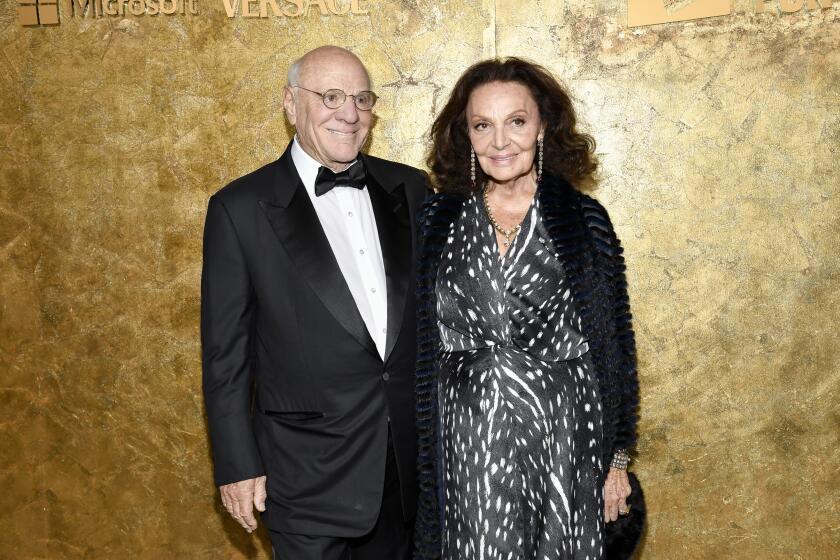Mending to beat the band
- Share via
BY the time a musical instrument arrives at the Los Angeles Unified School District repair shop, it might be dented, cracked, scratched, bent, chipped, smashed, warped, jammed, gouged, rusted or snapped.
It might be missing strings, keys, valves, hooks, hammers, springs, pads, paint, cork, felt or horsehair.
Somebody might have carved “Tony {heart} Jenny” on its side.
Maybe somebody kicked it or threw it. Maybe somebody used it as a club or bowled with it. Never heard of piano bowling? The school district repair guys have. That’s when a piano gets rolled across a room, from one student to another.
“Kids,” said Doug Hershberger, one of the piano tuners and repair technicians, “are very creative.”
In the interests of creativity -- but not that kind of creativity -- schools have long offered courses in instrumental music.
Through it all, there has been one constant: If instruments are being played in schools, instruments are being broken, sometimes in amazing ways.
When that happens, they wind up at 1240 S. Naomi Ave., in a cavernous workshop on the grounds of what once was Lafayette Junior High School downtown near the Santa Monica Freeway. Now surrounded by warehouses and truck bays, the shop is a short walk from the spot where jazz legend Jelly Roll Morton is said to have once lived on Central Avenue.
Inside, it seems a throwback to some pre-industrial craft guild workshop.
Twenty-five people work at the shop, which is responsible for maintaining about 85,000 instruments, some of which have been in L.A. schools since the 1930s.
The man in charge, Steve Riccobono, believes it is the largest musical instrument repair shop in the United States. Bill Mathews, executive director of the Illinois-based National Assn. of Professional Band Instrument Repair Technicians, said Riccobono is probably right.
On any given day, the shop might receive a shipment of violins and violas, saxes and clarinets, tubas and sousaphones. Or French horns, oboes, trombones, cellos, basses, piccolos and flutes.
Autoharps. Drums. Trumpets, bassoons, contrabassoons. Electric and acoustic guitars. Guitarrons and vihuelas, members of the guitar family that are used in mariachi music. Ukuleles. Sitars -- the district owns a couple of those.
And, of course, pianos.
PIANOS get sent downtown only when they need major repair work. Otherwise, technicians go to the schools to tune and fix them. If it seems excessive for one school district to employ four piano technicians, consider this: There are more than 4,000 pianos in L.A. schools.
One of them is destined for Bancroft Middle School once Hershberger finishes rebuilding it. A 7-foot, 1905 Steinway B grand piano, it was donated to the district and, according to Hershberger, had been badly treated at its first home, Fremont High School.
“The kids were tearing it up,” he said.
If it had been a lesser piano, the repairmen might have done just enough to make it playable. But, Riccobono said, “when we get a fine piano like this, we spend the money to restore it.”
Walking over to the piano, which was without its strings, he dropped his fist on its soundboard, the spruce innards below that help produce the instrument’s music. The thump resonated through the room in rich waves in the key of G.
“Hear that sound?” Riccobono said. “That’s why.”
So for several months, in between tunings and other jobs, Hershberger, a second-generation piano technician who apprenticed to his father as a young man in Long Beach, has been lovingly bringing the Steinway back to life.
He repaired cracks in the soundboard, had the case refinished in the original ebony, took off the legs -- ungainly modern things that probably were added in the 1950s -- and had the district’s adjoining mill shop make him a new set that replicated the originals.
He even had a fellow technician, Steve Bagmanyan, an Armenian immigrant who once painted cars in a body shop, paint the metal plate of the piano a bluish silver, with black highlights.
After all the work is done, Riccobono estimates, the restored piano will have a market value of $70,000 to $80,000.
But it isn’t for sale.
AT any given moment, a visitor to the shop might see Edwin Barker, a strings expert, carefully repairing a crack in a cello, or brass specialist Patricia Collins ironing out a dent in a tuba with one of the shop’s “dent rods,” medieval-looking contraptions that are fitted with smooth metal balls and jammed into the instrument to straighten it out.
Come December, workers might be polishing the district’s silver-plated sousaphones, trumpets and trombones that come out of storage precisely once a year, when the All City Band -- comprising some of the district’s best musicians -- plays them in the Rose Parade.
Some of the shop’s tasks are fairly simple, like replacing the horsehair on a violin bow.
Others can be a challenge, such as straightening the slide on a bent trombone. The slightest deviation will cause the slide to stick. The most difficult instrument, Riccobono said, is probably the oboe, which has several dozen moving parts. Such instruments, snorts deputy shop superintendent Dave Deichman, appear to have been “designed by committee.”
On occasion, maybe a dozen times a year, an instrument comes in that gets the dreaded label “BER” -- beyond economical repair. These wind up in the trash or on the walls of the shop as twisted (literally) pieces of sculpture.
“These guys hate to do that,” Riccobono said. “They take it personally.”
In general, he said, the lifespan of an instrument in L.A. Unified is 40 to 50 years. Every few years, the district makes a bulk purchase of new instruments. The last time was in 2000, when $1.3 million was spent on about 3,700 instruments, Riccobono said. The district doesn’t just replace instruments, but also adds to its inventory to meet growing demand.
There is a common notion, especially among people who do not have children in L.A. Unified, that instrumental music is a thing of the past in the city school system.
And in fact, California schools in general have scaled back their instrumental music programs so far that the Music for All Foundation, a proponent of music education, issued a report in 2004 titled: “The Sound of Silence: The Unprecedented Decline of Music Education in California Public Schools.”
The L.A. district does lag behind some others in the sheer quantity of instrumental music classes. More than 200,000 of the 1 million students in New York City schools study instrumental music (with generous financial support from outside organizations), and the district maintains an inventory of more than 300,000 instruments.
Los Angeles, with about 708,000 students overall, manages to reach slightly more than 6,000 elementary and 30,000 secondary students in its instrumental music programs, according to Richard Burrows, who runs the district’s arts education programs. Overall, the district spends about $100 million a year on arts education, including theater, dance and visual arts, and has a goal of intertwining the arts throughout its curriculum.
(Los Angeles Unified has more than twice as many instruments as it does instrumental music students for two reasons, according to Riccobono. One is that some instruments, especially the more obscure ones, sit idle some years because no one signs up to play them. The other is that stringed instruments’ bows are considered instruments, so violins, violas, cellos and basses are effectively counted twice.)
Over the years, Riccobono said, Board of Education members seeking to cut costs have tried to slash the shop’s budget, which is currently $1.9 million a year.
But the shop has so far staved off the reductions, arguing that it actually saves the district money. Most districts send out their broken instruments to private shops, but Burrows said that generally costs more than triple what L.A. Unified spends on its in-house operation.
Despite its shortcomings, Los Angeles Unified runs some of the strongest individual arts programs in the country, instrumental music among them -- racking up long lists of awards and invitations to perform across the U.S.
Doubters should spend a few minutes listening to the compact disc recorded by the jazz band at the Hamilton High School Academy of Music, attend a rehearsal at Washington Prep’s music magnet or drop in on an advanced strings class at Millikan Middle School’s Performing Arts Academy.
Among the products of L.A. Unified’s music programs are conductor Michael Tilson Thomas, concert bassist Gary Karr, trumpeter Herb Alpert, the band members of Ozomatli, the late, great jazz saxophonist Dexter Gordon and jazz pianists Patrice Rushen, Eric Reed and Horace Tapscott. (There is a much longer, celebrity-filled list of musicians who attended L.A. schools, but it isn’t easy to confirm which ones studied music in school.)
The instrument repairmen take no small amount of pride in all this.
Mike Jamieson, who tunes and repairs pianos, said he was drawn to the shop because of the “Old World, artisan quality” of the work. Like several of his fellow technicians, he had a successful career as a musician -- in his case, playing trombone in Stan Kenton’s big band in the 1970s.
Deichman, a violin repairman, used to play baritone sax in the O’Jays. Brass man Michael Dubkin played tenor sax for Little Richard.
Woodwinds technician Tony Garcia played sax for the Temptations, the Four Tops, the Platters, the Coasters and the Marketts, a pioneering surf band best known for recording the theme song to television’s “Outer Limits.”
Joshua Fang, a strings technician, plays cello in the La Mirada Symphony. Don McKinley, a strings technician, plays Dobro in Vin Fiz Flyer, a bluegrass band.
BUT nobody has a better story than Garcia, the sax player and woodwind repair guy. “I’ve been a teacher, musician and repairman,” he said. “That’s what I’ve been doing since I was 12 1/2 years old.”
Garcia, 62, grew up in East L.A., in gang territory, and was a gangster from an early age. He figured his career choices were “burglar, jail or death.” One day, he was with his buddies in a schoolyard, “and I heard this sound coming from the auditorium.”
Curious, he walked over and peeked in. “Lo and behold, I see 80 kids whaling away on their instruments. Eighty kids! It was a youth orchestra. You’ve heard about a turning point in life? Well, that was my turning point.
“The bandleader looked at me and he went like this” -- Garcia made a come-hither motion with his index finger. “And I went like this.” He pointed to his chest as if to ask, “Me?”
“And I walked over -- strutted over is more like it.... The next thing that happened is, I had a metal clarinet in my hands. The lessons were $5 a month, and we didn’t have $5, so I started mowing lawns.” After about six months, the bandleader asked him to mentor less experienced players.
“I’ve just been teaching kids and playing and fixing instruments ever since,” he said.
Surrounded by bits and pieces of saxophones, clarinets, flutes and piccolos, instruments that have been played by generations of children and that will be nursed for yet another generation, Garcia was a man in his element. A devout Christian, he sees music as his calling.
“I’m a fighter,” he said, “for music.”
mitchell.landsberg@latimes.com
More to Read
The biggest entertainment stories
Get our big stories about Hollywood, film, television, music, arts, culture and more right in your inbox as soon as they publish.
You may occasionally receive promotional content from the Los Angeles Times.










